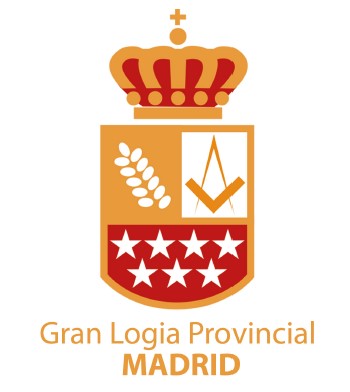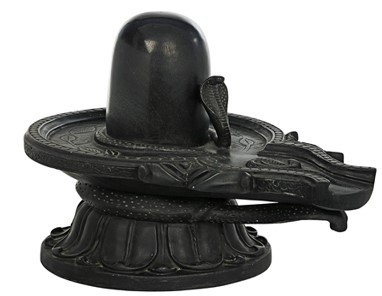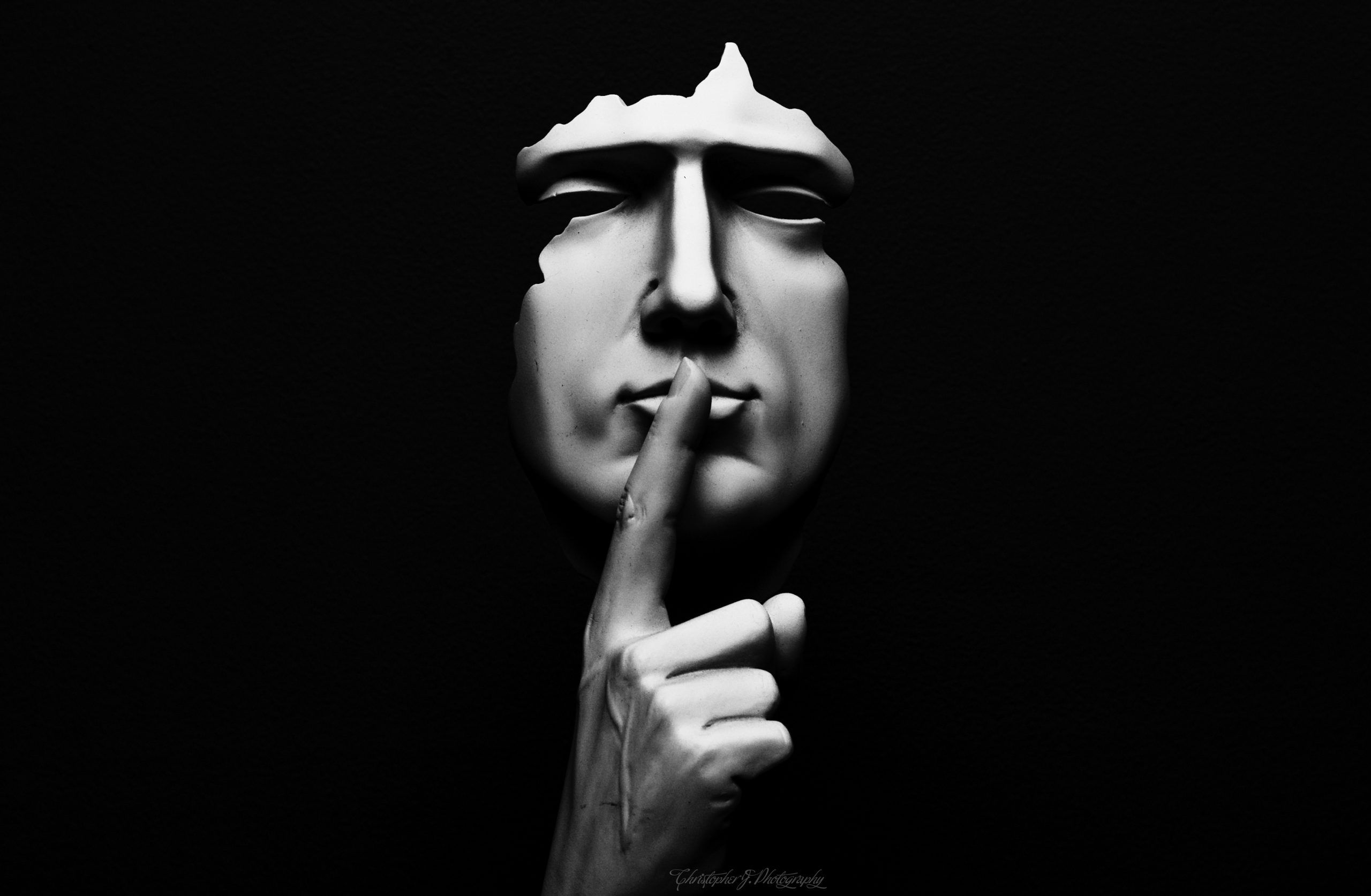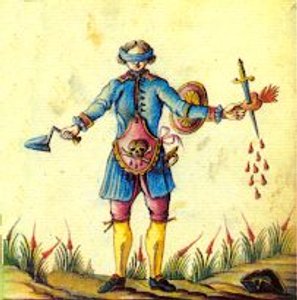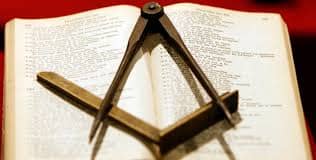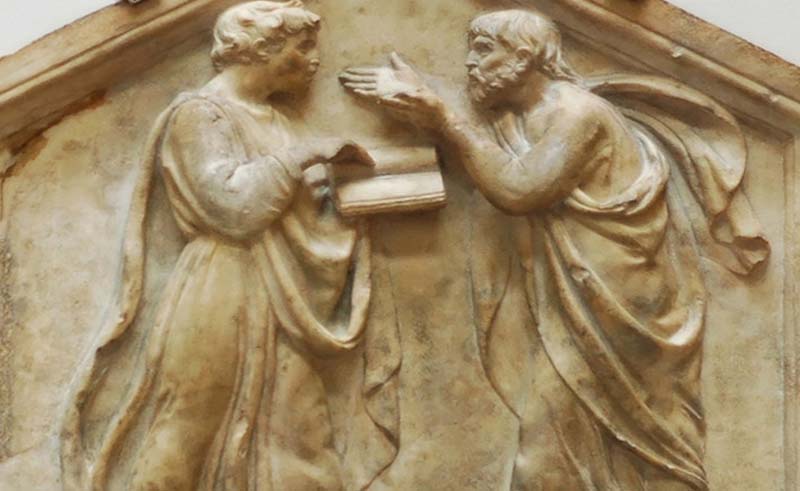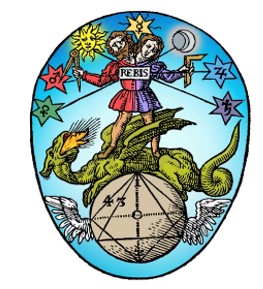
The mythological legend says that the Great Architect of the Universe initially created Rebis in His own image and likeness. Rebis was a very powerful god, as powerful as his creator. The G.A.D.U. regretted granting him so much power and decided to weaken him by endowing him with two independent sexes, giving him the ability to reproduce on his own and expand the species.
We can observe that Rebis holds a compass in his masculine half, associated with his father, the sun, or the representation of the heavens, and a square in his feminine half, associated with his mother, the moon, or the representation of the earth. The square and compass symbolize that Rebis possesses the “Virtues of Heaven and Earth,” represented also by a square, crafted with the square, and a circle, drawn with the compass.
In the image, we see Rebis standing atop a dragon. This is the philosophical dragon or the Babylonian dragon of the alchemists. The dragon is the guardian of the highest wisdom, considered a custodian of knowledge on par with enlightened men.
Its power is related to mastery over the four primary elements that metaphysically govern nature: earth, air, water, and fire. The reasoning is as follows: its slithering body represents its connection to the earth; its scales symbolize its power over water; its wings demonstrate its dominion over the air, and its fiery breath proclaims it as the master, guardian, and lord of fire.
Just as the solstices represent renewal and purification for the Mason, for alchemists, the dragon’s fire must destroy in order to regenerate. Once again, the principle of “Solve et Coagula” emerges, leading to the awakening of the sacred fire or Kundalini, as a pure and renewing element.
The dragon is supported on a winged sphere. It is winged because, in ancient Egypt, wings symbolized divinity, royalty, and power. Within it, we once again see the square representing earth, the circle representing the heavens, and the equilateral triangle, which in alchemy symbolizes the triple influence of matter, life, and intelligence.
Applied to our alchemical purification as Masons, our soul originates from the elemental world, represented by sulfur. The spirit emanates from the heavens, represented by mercury or radical moisture, which adheres to the sulfur. These two distinct substances belong to the same body, united by an element that binds them: the philosophical salt or the Babylonian dragon.
Rebis is the keeper of the two keys that open both solstitial gates, which are unidirectional—they allow only exit and no return. These gates represent, as a reminder:
- The gate of the summer solstice: the awakening of the feeling of renewal and our will to change.
- The gate of the winter solstice: the departure from the darkness of the profane world into the initiatory light of wisdom and knowledge.
In this drawing, we have explored the topic quite thoroughly. There is more symbolism to uncover, but that will be the subject of another presentation, so we will leave it here.
Now, let us delve into the interpretation given to this symbol in ancient thought, which will help us understand the decisive role it has played throughout history.
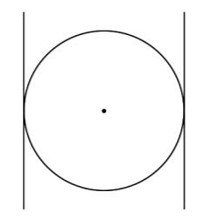
In ancient times, this symbol was closely associated with the male reproductive organ, as the sun was often regarded by many cultures as the fertilizing or masculine principle, as we saw with Rebis. The sun was conceived as the conqueror of darkness and the night.
This phallic worship originated in Egypt after Osiris was murdered and dismembered by Typhon (remember Osiris as “the black god”), who represents the deprivation or destruction of sunlight with the arrival of night.
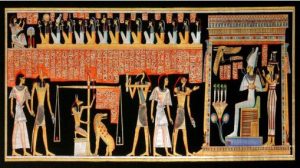
Isis, his wife, who symbolizes nature, found all the pieces of Osiris’s body except his generative organs. This myth simply represents that the fertilizing and vitalizing power of the sun ceases when the sun sets, giving way to night. For this reason, the Egyptians regarded Osiris as a black god, the lord of the night and the sovereign judge of the underworld.
In ancient times, it was common to depict phallic images at the entrances of temples. For example, the historian Lucian mentions the existence of two colossal phalluses, each measuring 180 feet (approximately 24 meters) in height, in the forecourt of the Temple of Hierapolis, a Hellenistic city from the 2nd century BCE, dedicated to the Syrian deity Astarte, the goddess of love and fertility.
The German Egyptologist and archaeologist Karl Müller stated in his 1852 work Ancient Art and its Remains that a colossal phallus with a diameter of twelve feet was placed on the tomb of Alyattes, King of Lydia.
This phallic worship was so universal and widespread that it has even been discovered among pre-Columbian cultures in the Americas. One example is the marble phallic image found by Dr. Arthaut in 1790 in a cave in Santo Domingo, belonging to the Taíno Indians.
Therefore, this worship can be considered a symbol of the masculine principle of nature and a religious rite without any lascivious or impure significance.
In the Volume of the Sacred Law (V.L.S.), in Psalm 106 of Numbers, it says: “They joined themselves also unto Baal-peor and ate the sacrifices of the dead.” This expression, according to Russell, clearly refers to the physical qualities of matter and the period during which death, due to the lack of solar warmth in winter, takes hold of the earth.
According to him, Baal-peor represented the sun exerting its fertilizing forces, as he reflects in his book Connection Between Sacred and Profane History.
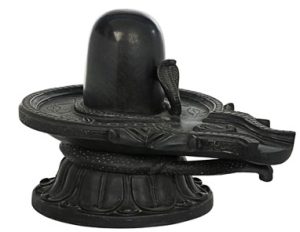
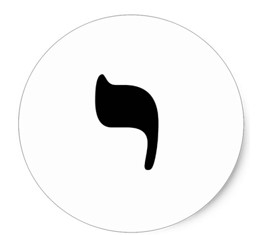
In the Afro-Asiatic origins of Semitism, around 3,000 years ago, the figure of this symbol appeared for the first time. As we see below, the Hebrews also believed that the sun was a masculine, fertilizing energy, while nature or the universe was the prolific feminine principle. They represented this hermaphroditism of the Supreme Divinity with the symbol of the circle and the Hebrew letter “iod” in the center.
Thus, originally, there was no point inside the circle; instead, there was this small mark resembling an accent in Spanish, corresponding to the letter Y or J in Hebrew. The reason for placing this letter inside the circle is that, in Kabbalah, it represents the seed, the origin. In fact, it is the smallest letter in the Hebrew alphabet and symbolizes the power and action of the Almighty, the ultimate active principle, the divine particle which, as a virginal spark, represents the divine masculine principle.
At the same time, it is the first initial of the sacred name of the G.A.D.U. in Hebrew, a name that in Judaism is forbidden to pronounce or even write on any surface that could be destroyed.
The following passage from the Torah references this hermaphroditism of the Creator. It is found in section 1:27 of the Book of Bereshit or Genesis, and it states literally: “So God created man in His own image; in the image of God He created him: male and female He created them. And having been created ‘male and female,’ they were made in His image and likeness.”
Up to this point, I have provided a brief introduction to the millennia-old origins of the hermaphroditic symbol of the point within the circle as a divine representation. I will now conclude with the classical Masonic interpretation of this symbol.
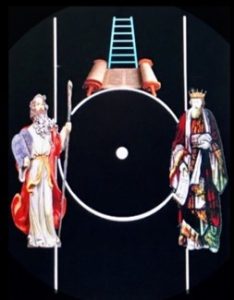
As you can see, it is the same circle with a point at its center, bounded to the north and south by two great parallel lines. Represented on these lines are Moses and King Solomon. The circle touches the V.S.L., and upon it rests Jacob’s Ladder.
The point inside the circle represents the Mason. If we place our compass on this point, symbolizing the virtues of fairness, respect, and equality, we can draw a circle that represents the duties we must observe toward the G.A.D.U. and the just boundaries of conduct with our fellow beings.
Our fellow beings are represented by the infinite points that make up the circle. All are equidistant from the center, and our freedom as masters of the compass allows us to open or close it as we see fit, encompassing a range from nothing to everything.
To the north and south are two parallel lines tangent to the circle. These lines, besides representing the solstices, symbolize the just, upright, and fraternal conduct that the Mason must observe both in their personal life and in their relationships with their brothers.
Once again, we see the representation of the square and compass.
The parallel lines are represented by Moses and King Solomon. Moses was instructed by the Egyptians in wisdom, humility, and particularly in the mastery of Masonry. Solomon symbolizes the virtues granted to him by the G.A.D.U., which, according to the Torah, include prudence, justice, and clarity in discerning between good and evil.
At the top of this circle rests the Volume of the Sacred Law, which, as we know, must guide and regulate our faith. Upon the V.S.L., Masons solemnly swear the obligations of their degree— a sacred and indispensable commitment we acquire for life.
Supported by the V.S.L. is Jacob’s Ladder, which reaches the heavens and leads us to the G.A.D.U. The heavens are conceived as a celestial abode, veiled from mortal eyes by the starry firmament. Jacob’s Ladder rests on the V.S.L. because its doctrines teach us to believe in the precepts of the G.A.D.U., who will not deceive us nor be deceived.
As our ritual states, this belief strengthens our faith and allows us to ascend to the first rung of the ladder. Faith instills in us the certainty of sharing divine promises, enabling us to climb to the second rung, hope. The third rung is charity, which encompasses everything, and with it, we reach the pinnacle of spiritual profession.
These first three rungs—faith, hope, and charity—lead us to the virtues upon which Masonry’s morality rests. Plato called these the cardinal virtues of man: prudence, justice, fortitude, and temperance.
Thus, for Masons, Jacob’s Ladder symbolizes the spiritual qualities of the soul—treasures of superior knowledge that we access once we overcome the arduous slope of personal improvement.
Rotating around this point, it is inevitable to touch the two parallel lines and the V.S.L. As our ritual and emulation lectures state: “As long as a Mason remains within this circle, they cannot go astray.”
For alchemists, remaining within the circle represents the mark of the Great Work, which, as the Alsatian sage and Benedictine canon Basil Valentine told Fulcanelli, culminates for those privileged to observe the brilliant morning star, the light of the wise, which consecrates wisdom.
Since my days as an Apprentice, this has been the symbol that most caught my attention, though I did not fully understand why. Now, after nine years in Masonry, I find it even more fascinating. I have come to understand that it demands from me a very ambitious project, which I now wish to share as a conclusion to everything said:
- The point inside the circle, representing myself, asks of me: “fairness, respect, and equality.”
- The circle itself marks the “just boundaries with others.”
- The parallel lines demand uprightness through “humble, just, wise, and fraternal conduct.”
- Touching the V.S.L. establishes the direction of my faith and my duties to the G.A.D.U.
- Jacob’s Ladder calls me to practice the virtues of the soul: “faith, hope, and charity,” as well as the moral precepts of “prudence, justice, fortitude, and temperance.”
This makes even more sense to me now, knowing that the Third Degree teaches us to remain within the circle with the two parallels. It prepares us, through the renewal of individual life beyond death, to face the final hours of our existence with the teaching, as our ritual says, that for just and upright men, death is not as terrifying as the stain of falsehood and dishonor.
I conclude by thanking you for your attention and hoping that the information shared about this symbol has brought some light.
Fermín Caballero
